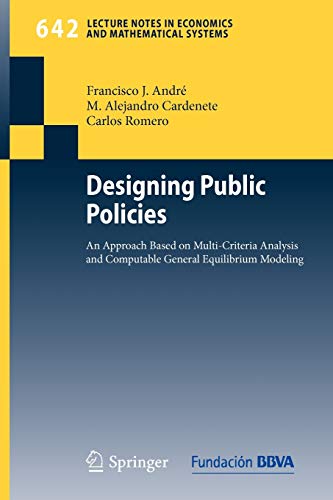designing public policies approach von andré francisco (7 Ergebnisse)
Suchfilter
Produktart
- Alle Product Types
- Bücher (7)
- Magazine & Zeitschriften (Keine weiteren Ergebnisse entsprechen dieser Verfeinerung)
- Comics (Keine weiteren Ergebnisse entsprechen dieser Verfeinerung)
- Noten (Keine weiteren Ergebnisse entsprechen dieser Verfeinerung)
- Kunst, Grafik & Poster (Keine weiteren Ergebnisse entsprechen dieser Verfeinerung)
- Fotografien (Keine weiteren Ergebnisse entsprechen dieser Verfeinerung)
- Karten (Keine weiteren Ergebnisse entsprechen dieser Verfeinerung)
- Manuskripte & Papierantiquitäten (Keine weiteren Ergebnisse entsprechen dieser Verfeinerung)
Zustand Mehr dazu
- Neu (5)
- Wie Neu, Sehr Gut oder Gut Bis Sehr Gut (2)
- Gut oder Befriedigend (Keine weiteren Ergebnisse entsprechen dieser Verfeinerung)
- Ausreichend oder Schlecht (Keine weiteren Ergebnisse entsprechen dieser Verfeinerung)
- Wie beschrieben (Keine weiteren Ergebnisse entsprechen dieser Verfeinerung)
Einband
- alle Einbände
- Hardcover (Keine weiteren Ergebnisse entsprechen dieser Verfeinerung)
- Softcover (7)
Weitere Eigenschaften
- Erstausgabe (Keine weiteren Ergebnisse entsprechen dieser Verfeinerung)
- Signiert (Keine weiteren Ergebnisse entsprechen dieser Verfeinerung)
- Schutzumschlag (Keine weiteren Ergebnisse entsprechen dieser Verfeinerung)
- Angebotsfoto (5)
- Keine Print-on-Demand Angebote (7)
Sprache (1)
Preis
- Beliebiger Preis
- Weniger als EUR 20 (Keine weiteren Ergebnisse entsprechen dieser Verfeinerung)
- EUR 20 bis EUR 45 (Keine weiteren Ergebnisse entsprechen dieser Verfeinerung)
- Mehr als EUR 45
Gratisversand
- Kostenloser Versand nach USA (Keine weiteren Ergebnisse entsprechen dieser Verfeinerung)
Land des Verkäufers
Verkäuferbewertung
-
Designing Public Policies : An Approach Based on Multi-Criteria Analysis and Computable General Equilibrium Modeling
Anbieter: GreatBookPrices, Columbia, MD, USA
EUR 53,58
EUR 2,27 für den Versand innerhalb von/der USAAnzahl: Mehr als 20 verfügbar
In den WarenkorbZustand: New.
-
Designing Public Policies: An Approach Based on Multi-Criteria Analysis and Computable General Equilibrium Modeling (Lecture Notes in Economics and Mathematical Systems, 642)
Anbieter: Lucky's Textbooks, Dallas, TX, USA
EUR 52,39
EUR 3,43 für den Versand innerhalb von/der USAAnzahl: Mehr als 20 verfügbar
In den WarenkorbZustand: New.
-
Designing Public Policies : An Approach Based on Multi-Criteria Analysis and Computable General Equilibrium Modeling
Anbieter: GreatBookPrices, Columbia, MD, USA
EUR 61,01
EUR 2,27 für den Versand innerhalb von/der USAAnzahl: Mehr als 20 verfügbar
In den WarenkorbZustand: As New. Unread book in perfect condition.
-
Designing Public Policies: An Approach Based on Multi-Criteria Analysis and Computable General Equilibrium Modeling (Lecture Notes in Economics and Mathematical Systems, 642)
Anbieter: Ria Christie Collections, Uxbridge, Vereinigtes Königreich
EUR 57,22
EUR 13,55 für den Versand von Vereinigtes Königreich nach USAAnzahl: Mehr als 20 verfügbar
In den WarenkorbZustand: New. In.
-
Designing Public Policies : An Approach Based on Multi-Criteria Analysis and Computable General Equilibrium Modeling
Anbieter: GreatBookPricesUK, Woodford Green, Vereinigtes Königreich
EUR 57,21
EUR 16,96 für den Versand von Vereinigtes Königreich nach USAAnzahl: Mehr als 20 verfügbar
In den WarenkorbZustand: New.
-
Designing Public Policies : An Approach Based on Multi-Criteria Analysis and Computable General Equilibrium Modeling
Anbieter: GreatBookPricesUK, Woodford Green, Vereinigtes Königreich
EUR 64,95
EUR 16,96 für den Versand von Vereinigtes Königreich nach USAAnzahl: Mehr als 20 verfügbar
In den WarenkorbZustand: As New. Unread book in perfect condition.
-
Designing Public Policies : An Approach Based on Multi-Criteria Analysis and Computable General Equilibrium Modeling
Verlag: Springer, Berlin, Springer Berlin Heidelberg, Springer, 2010
ISBN 10: 3642121829 ISBN 13: 9783642121821
Sprache: Englisch
Anbieter: AHA-BUCH GmbH, Einbeck, Deutschland
Taschenbuch. Zustand: Neu. Druck auf Anfrage Neuware - Printed after ordering - This monograph provides a novel approach to the evaluation of economic policy by combining two different analytical strategies. On the one hand, the computable general equilibrium (CGE) analysis, a standard tool mostly used to quantify the impact of economic measures or changes in the structural data of the economy. On the other hand, the multiple criteria decision-making (MCDM) approach, an op- misation technique that deals with problems with more than one objective. Ty- cally, CGE is well suited for the analysis of the interactions of multiple agents from the point of view of a planner single objective. Combining this technique with the MCDM approach allows developing models in which we nd many interacting agents and a decision maker with several objectives. The contribution of this work is partly methodological and partly applied. It provides a framework for the analysis of this type of problems, as well as a series of applications in which the strength of the approach is made clear. The consideration of environmental problems, as a speci c eld in which this technique of analysis can be used, is particularly well chosen. The environmental concern keeps growing steadily and has already become an issue in most of the standard economic decisions. It is therefore extremely important to nd systematic ways to introduce such a concern in the models with which we evaluate the impact of policy measures.







